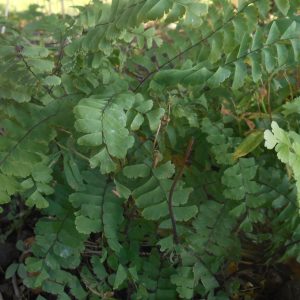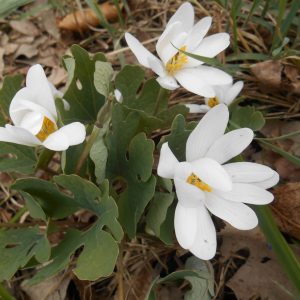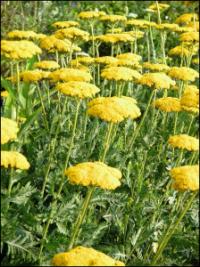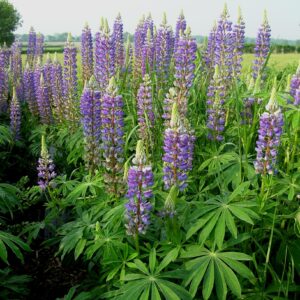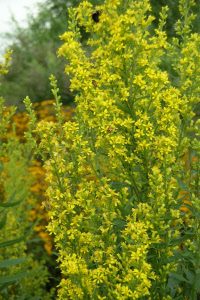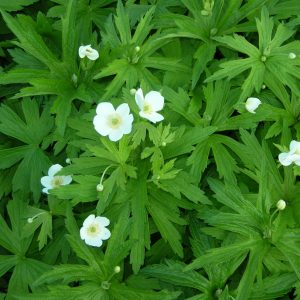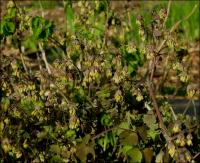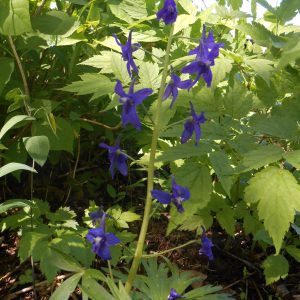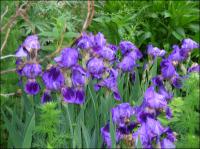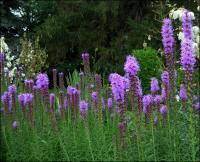Search Results for: bleeding heart vine
-
Adiantum pedatum Maidenhair fern Z 4-9
Grown for its delicate-appearing leaflets arranged in rows. One of internationally known garden designer Piet Oudolf’s 100 “MUST HAVE” plants, Gardens Illustrated 94 (2013)...
Grown for its delicate-appearing leaflets arranged in rows. One of internationally known garden designer Piet Oudolf’s 100 “MUST HAVE” plants, Gardens Illustrated 94 (2013)
Size: 12-24”x 12”
Care: Shade in moist soil
Native: all parts of No. America including Wisconsin
Awards: England’s Royal Horticultural Society Award of Merit.Cherokee made a tea from this for flu, fever, and rheumatism, paralysis and asthma. Native Americans used stem to make a hair wash and applied a topical poultice of masticated fronds to wounds to stop bleeding. 1st described by French botanist Cornut in 1635. Introduced to gardens in 1635 from Canada where it grew in “such quantities that the French sent it from thence in package for other goods and the apothecaries at Paris use it for (another Maidenhair) in all their compositions in which that is ordered.” Philip Miller (1768). Tradescant the Younger introduced it to English gardens in 1638 when he sent it from Virginia Colony to London. English herbalist Nicholas Culpepper claimed it as “a good remedy for coughs, asthmas, pleurisy, etc., and on account of being a gentle diuretic, also in jaundice, gravel and other impurities of the kidneys.” Father of mixed perennial gardens, William Robinson, called this “elegant…unquestionably one of the most distinct and beautiful of the hardy ferns.” The Garden 1876.
-
Sanguinaria canadensis Bloodroot, Indian paint, Red Puccoon Z 3-9
Available for purchase in Spring only Very showy, swan-white anemone-like blooms in spring from the center of glaucus, grey-green, lobed, puckered, rolled leaves. Both the leaves and root contain a...
Available for purchase in Spring only
Very showy, swan-white anemone-like blooms in spring from the center of glaucus, grey-green, lobed, puckered, rolled leaves. Both the leaves and root contain a red liquid. (Bloodroot) Ephemeral, dies back in summer.
Size: 6” x 12”
Care: part shade to shade in moist well-drained soil
Native: Nova Scotia to Manitoba, south to Florida and Arkansas, Wisconsin native
Wildlife Value: deer resistant. Pollen, but no nectar, makes this attractive to many different bees. Ants distribute the seeds.Sanguinaria is Latin meaning “blood,” so named for the red color of the sap. For Natives red sap used to make dye for skin, clothing, weapons and baskets. Used to induce abortions, as well as an aphrodisiac and cure sexually transmitted diseases. The root rubbed on the palm of the hand was a love charm for Ponca men. Iroquois prescribed it for diarrhea and constipation, to draw out slivers, hiccups, and generally as a panacea. It was administered to those who saw a corpse. Sioux used a weak solution to cure fever, rheumatism, congestion, and skin cancer, Ojibwa made dried roots into a necklace to prevent bleeding. 1st collected by Rev. John Banister in colonial Virginia c. 1678. According to John Bartram this was “…(C)alled by the Country People, Red Root, or Tumerick The Root dried and powdered is recommenced by Dr. Colden, as a Cure for jaundice, the Powder has been given to the Weight of a Drachm in Small Beer; and by others, for the Bite of a Rattle Snake.” Grown at Shadwell, Jefferson’s birthplace and home until it burned in 1770. Grown at America’s 1st botanic garden, Elgin Botanic Garden 1811, located where Rockefeller Center now stands. Pressed specimen in Emily Dickinson’s herbarium.
-
Achillea filipendulina Fernleaf Yarrow Z 3-9
June-July clumps of mustardy yellow platters on erect stems...
June-July clumps of mustardy yellow platters on erect stems
Size: 3’-4’ x 30”
Care: Full sun. Dry, well-drained soil. Heat and drought tolerant, stands up to wind.
Native: Caucasus, Iran, Afganistan.
Wildlife Value: Deer resistant.Achillea named for Achilles, hero of Homer’s Iliad, used Achillea millefolium to stop bleeding of his wounded soldiers at the siege of Troy. Achilles learned about the uses of Achillea from Chiron, the Centaur. A. filipendulina collected by French explorer and botanist Joseph Tournefort (1656-1708) in the Levant c. 1700.
-
Lupinus perennis Sun-dial lupin, Old maid’s bonnet, wild pea Z. 4-9
Many flowered blue, pea flowered raceme May-June
Many flowered blue, pea flowered raceme May-June
Size: 1-2' x 12"
Care: full sun in well drained soil. A legume, so it enriches the soil by adding nitrogen.
Native: Maine to FL, Ontario to MN to Louisiana, Wisconsin native.
Wildlife Value: Attracts both hummingbirds and butterflies. The only food for larvae of endangered species, Karner Blue butterfly.Lupinus is Latin from Lupus meaning “wolf.” Cherokee used this to stop bleeding. The Menominee fattened their horses with this Lupin and made them spirited. They rubbed the plant on themselves to give power to control the horses. Likely sent from its native Virginia to England by Tradescant the Younger in 1637. Collected by André Michaux(1746-1802) in late 1700’s. Grown by Jefferson. Grown at America’s 1st botanic garden, Elgin Botanic Garden 1811.
-
Solidago speciosa Showy goldenrod Z 3-8
Broad spikes of erect panicles of mustard yellow welcome late summer into autumn
Broad spikes of erect panicles of mustard yellow welcome late summer into autumn
Size: 3-5’ x 12-18”
Care: Sun, any soil, stands up to wind, no staking needed
Native: Central & eastern US, Wisconsin native
Wildlife Value: Loved by butterflies for its nectar – Small copper, Monarch, Giant swallowtail, Gray hairstreak, Clouded Sulfur, Fritillary, Pearl crescent & Cloudless sulfur. Attracts praying mantises.Meskwaki applied an infusion made of roots to burns. Chippewa used this plant for many things – to stop bleeding in the mouth and lungs, reduce pain from strains and sprains, as a stimulant and tonic and, mixed with bear grease, for a hair ointment. HoChunk and Winnebago made a blood purifier and remedied incontinence. Collected by Thomas Nuttall, English planthunter (1786-1859) who wandered over all of No. America searching for plants, animals, birds and rocks from 1809 to 1842.
-
Anemone canadensis Meadow anemone Z 3-8
Pristine pure white petal-like sepals frame many golden anthers in early summer
Pristine pure white petal-like sepals frame many golden anthers in early summer
Size: 12-24" x 12” spreading
Care: full sun to part shade in moist soil
Native: North America as far south as Missouri, Wisconsin native
Wildlife Value: pollen for small bees
Size: Good groundcover under trees where soil is moist, naturalized garden.Used medicinally by many Native American groups. The roots cleared up sores and leaves stopped nose bleeds for the Chippewa. It relieved the Iroquois of worms and counteracted witch medicine. For the Meskwaki this plant uncrossed crossed eyes. Ojibwa singers used it to clear their throats and remedy lower back pain. Sioux used the root to remedy several ailments – staunch bleeding, reduce lower back pain, sore eyes, crossed eyes and twitching of eyes. They also ate the root to clear the throat to boost good singing. Collected by Meriwether Lewis August 17, 1804 on the 1st leg of the Expedition.
-
Thalictrum dioicum Early meadowrue Z 5-9
OUT OF STOCK Hanging chartreuse blooms dangle from the stems in spring...
OUT OF STOCK
Hanging chartreuse blooms dangle from the stems in spring
Size: 20" x 24"
Care: shade to part shade in moist or moist well-drained soil.
Native: Quebec west to No. Dakota, south to Georgia, Wisconsin native
Wildlife Value: Attracts Black swallowtail butterfly. Deer resistant.Thalictrum is from Greek meaning “to flourish” or “look green.” Cherokee made an infusion of the root to cure nausea and diarrhea. Iroquois used it to remedy sore eyes and heart palpitations. The plant also would “make you crazy.” One of 1st No. American plants sent to Europe – grew in Tradescant the Elder’s South Lambeth nursery in 1634. Collected again by Rev. John Banister who moved to colonial Virginia in 1678. A gunman mistakenly shot and killed him while he collected plants. Scotsman Thomas Drummond collected this on the eastern base of the Rocky Mountains. Grown at America’s 1st botanic garden, Elgin Botanic Garden 1811.
-
Delphinium tricorne Dwarf larkspur, Spring larkspur Z 4-8
OUT OF STOCK – Available to order in Spring only Spring ephemeral of blue delphinium elf-cap spikes. Substitute these for tulips, a favorite food of deer and rabbits...
OUT OF STOCK – Available to order in Spring only
Spring ephemeral of blue delphinium elf-cap spikes. Substitute these for tulips, a favorite food of deer and rabbits
Size: 18-24” – 6-9”
Care: sun to shade in moist well-drained to moist soil
Native: Pennsylvania to Iowa, south to Alabama and Oklahoma and states in between
Wildlife Value: food for hummingbirds and butterflies; deer & rabbit resistant.Collected by André Michaux c. 1800. Cherokee used this for heart ailments and reported that it makes cows intoxicated and they die. The name tricorne comes from the 3-cornered shape of its seeds, like the shape of colonial hats with brims turned up on three sides. This is breathtakingly beautiful but slow to grow. It is also an ephemeral and dies back after going to seed so mark it or have a good memory where it is so you don’t dig into it planting something else. It comes back in spring.
-
Iris ‘Monsignor’ syn. Anne’s Iris Z 3-9
Classic purple iris with sunny throat and white stripes on the beard, blossoms in late May to early June...
Classic purple iris with sunny throat and white stripes on the beard, blossoms in late May to early June
Size: 15" x 8"
Care: moist well-drained soil in sun to part shade
Wildlife Value: Welcomes bees with easy access to pollenIris is named after the Greek goddess who accompanied the souls of women to the Elysian fields by way of the rainbow. Her footprints left flowers the colors of the rainbow. Iris means “eye of heaven.” The iris is the flower of chivalry, having “a sword for its leaf and a lily for its heart.” Ruskin. This Iris was growing in the gardens when we moved here in 1992. The property has been owned continuously by the Patterson family from 1880 until 1992. Anne Patterson began gardening here in 1927 as a young bride, so I call these “Anne’s Iris.” In June, 2003 Anne turned 104 years old. She passed away on August 1. Hybridized by French nursery Vilmorin-Andrieux et Cie, a legendary seed house started in late 1700’s. Some firm members specialized in Irises from the 1880’s. The firm introduced ‘Monsignor’ in 1907, one of its earlier hybrids.
-
Liatris spicata Blazing star, Gayfeather, Button snakeroot Z 3-8
Rosy purple spikes in July and August, a flower arranger’s dream
Rosy purple spikes in July and August, a flower arranger’s dream
Size: 2-3' x 18"
Care: Full sun in moist to well-drained soil.
Native: Eastern and southern U. S., Wisconsin native
Wildlife Value: favorite nectar source for Buckeye butterflies & host for caterpillars of Painted lady, Fritillaries, Skippers, Sulphurs, Coppers & Checkerspot butterflies.Native Americans used roots medicinally for backaches, colic, dropsy and to strengthen a weak heart. The Dakota recognized this as an indication “when the flower is blue-red that corn is good to eat.” Nicollet Diary, August 13, 1838. The dried root reputedly repelled moths from stored clothes. First collected by English naturalist Mark Catesby and cultivated since 1732. Grown at America’s 1st botanic garden, Elgin Botanic Garden 1811.

